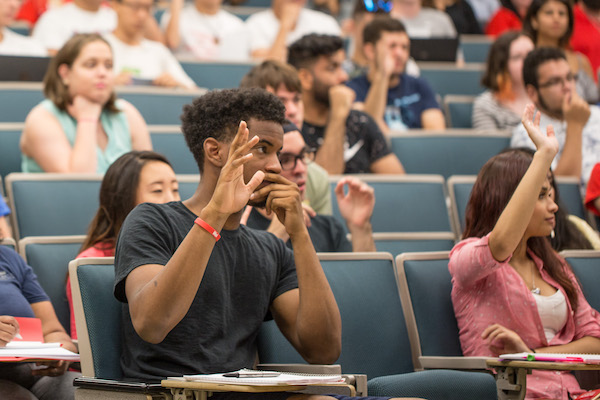Generally, in a flipped or hybrid course students are asked to complete some kind of online assignment that produces an artifact of learning. This could be anything from taking a reading comprehension quiz, contributing to a discussion board, submitting an essay, working a problem set, or writing a program. Successful flipped courses align their in-class activities with the work students previously submitted online. This requires that the instructor review the work before class and let that online work inflect what happens in class. Flipped courses often fail when the face-to-face portion of the course does not address the student work completed online, leaving the students to draw the connections on their own or, regrettably, fail to see them altogether.
Aligning the in-class meeting around the student learning artifact is essential for getting the flipped model right. Here are a few reasons why:
Attention
We know that the amount of time students spend focusing on a particular body of knowledge or practicing a certain skill is crucial for their ability to learn. By aligning the online activities directly with the face-to-face activities, students have more contact hours with the course content and thus are better able to acheive the desired outcomes. As Julie Schell notes,
One reason flipped classrooms fail is because we don’t direct students’ attention effectively. If students don’t think about or pay attention to the right things, they won’t learn the right things. Direct their attention carefully and purposefully to get the payoff you are looking for.
A good indicator of whether we are directing attention carefully in a blended course is how fully integrated the online and offline components are.
Mental Models
But focusing student attention isn’t the only benefit gained from aligning course activities. In essence, what the instructor is doing when she directly addresses the student’s prior work in class is providing a framework or conceptual structure for her students. When online and face-to-face activities are not aligned, attention tends to get split between the two course environments with seemingly separate ends. Because students do not have the robust mental models that their instructor does, the connections are not made. As Ambrose et al. claim in How Learning Works (2010), “When students are provided with an organizational structure within which to fit new knowledge, they learn more effectively and efficiently than when they are left to deduce the conceptual structure themselves.” By contextualizing, structuring, and clarifying the online activities during class time, students more quickly begin to create robust mental models and organize knowledge authentically.
Motivation
Additionally, when students see that their instructor is actively reviewing the work they are completing online and explicitly discussing it in class, they tend to be more motivated to complete the work and eager to hear how the instructor will discuss it.
Applying these ideas
To implement this kind of alignment, you can start small. One easy way is to show your students the results of a quiz in a graphical representation. Ask students who answered a question in one way why they thought it was the right answer and how they came to that conclusion. Or, say you had a discussion board requirement for the week’s online component. Take a screen shot of a particularly good post and include that into your slide deck and bring it up during your lecture. Weaving in student work like this goes a long way toward reinforcing prior student effort.
If you have more time to plan, another strategy would be to design an active learning activity that uses the online learning artifact as source material. For instance, you could group students and have them rework a problem they recently completed online, but ask them to change certain variables, solve the problem again, and then discuss how and why the results differ. This leverages previous student work and gives them a basis for discussion that wouldn’t exist if entirely new source material were used.
Many more examples could be offered, but the idea is pretty straightforward. Design online assignments that will serve as the basis for the in-class component of flipped courses. This alignment will give students more contact with the course material, aid them as they begin to understand the shape of thinking in the discipline, and motivate them to do the online work because they know their instructor will use it in the coming class.

